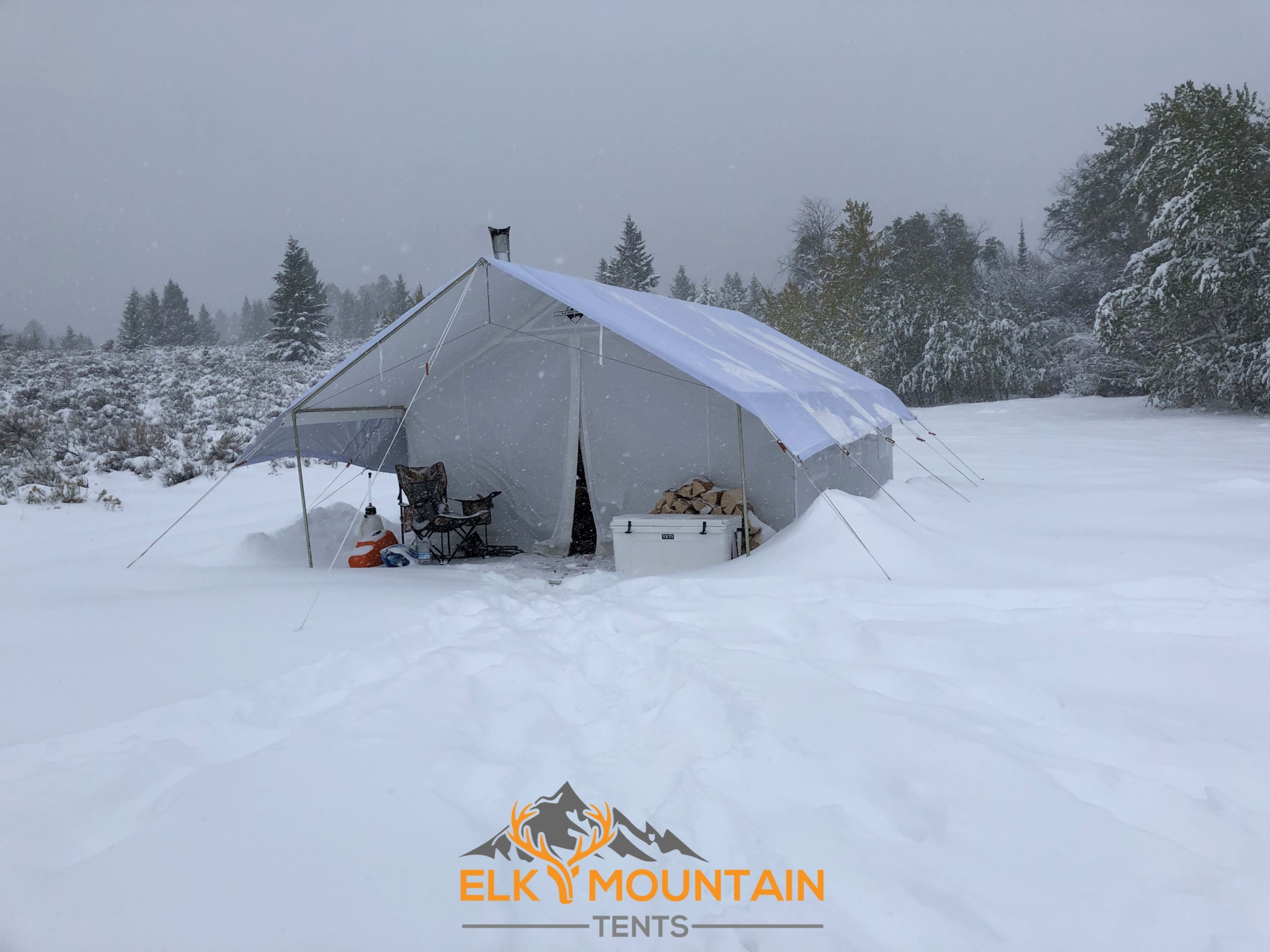Dome or Canvas Wall Tent, Which is Best?
Tents come in all shapes and sizes. Whether a tent is domed or walled is often a matter of preference, but there are good and not-so-good aspects to both that can be taken into consideration for any tent use or purchase.
Tent Floor
One thing to consider is whether or not the tent has a floor. In most canvas wall tents, they will be obtained with the idea that an additional tarp or flooring solution will be used in tandem. Most canvas wall tents do not have a sewn in floor because it can be pretty tricky to put together the sturdy framing from the inside a collapsed tent. Canvas walls can be a bit heavier than other fabrics which adds to the difficulty of erecting a walled tent with a floor already attached. Building the structure, then covering the “bones” with the canvas is exceedingly more doable.
People often find that having a floorless canvas tent suites their needs just fine because it provides the chance to use any flooring they’d like as opposed to being committed to one floor for the long haul. Plus, it’s easier to clean and to replace a well-loved floor when it is detachable.
Walls and Space
Canvas walled tents are sometimes referred to as “cabin” tents because they are very similar to a walled off room. The walls of a cabin tent are often perpendicular to the ground which provides lots of space for storage, walking, and organizing the tent interior. In domed tents, floorspace can be sacrificed a bit due to the slope of the walls. This can mean that fewer people or items can rest comfortably, and it can make standing and maneuvering around the tent a bit more tricky.
Assembly and Portability
Domed tents have the advantage of being self-standing. They are often put together using tension to hold them up, which means once they are standing, they are pretty much staying together. Many domed tents have floors built in, which can be a positive for campers who worry about rodents or bugs entering the tent. This can also mean that in nylon tents, there is little space for condensation to escape which means water and dew can build up on the inside or outside of the tent if there is not enough vented air moving through. Properly vented tents can be found, but it is important to be aware of the potential condensation build up in tents with sewn in floors. Domed tents with floors can be tricky to clean, as well, because there may be corners of the tent that do not have an outlet for dirt and leaves to be removed.
Since many domed tents come with collapsible poles, they are extremely portable and are often made from material that is lightweight. This makes them pretty great for individuals and groups who like to backpack, hike, or travel light.

Setting up a canvas tent can be a trickier process compared to a domed tent. Many tents made in the domed style can be constructed with one or two people, while canvas tents frequently require at least two people to help set it up. For campers who are heading out on their own, domed tents may be more simple to pack since they are often more manageable and don’t need to be as large. In the case of travelling with a larger group of people where tents will be used for different reasons- ie a kitchen tent, a sleeping tent, etc.- canvas tents can offer a more spacious room with better temperature control while taking up less square footage due to the straight walls.
Glamping
For folks looking to go “glamping”, stay an extended amount of time, or who require a more sturdy shelter, cabin tents are likely a better choice. They tend to be built with incredibly sturdy pole structures that are built to stand strong. Materials used to make the outer canvas are also often heavy-duty fabrics which offer a bit more stability when weather hits, as well as making these types of tents longer lasting.
Stakes and Stability
Because they are more heavy duty and do not tend to rely as much on tension against other parts of the tent to remain aloft, cabin tents may require guylines and stakes to offer added stability and to make sure the tent will stay together in strong winds. While it’s also a good idea to stabilize dome tents, it may be less necessary because the tent works with its other components to maintain proper tension. However, it’s still advised to stake a domed tent to the ground to ensure that the lighter weight materials used to construct it do not blow away in a heavy gust of wind.

Location, Location, Location
Taking into consideration the location of the tent is imperative when deciding between a domed tent and a canvas wall tent. Free-standing tents are great for places such as rocky outcroppings and wooden platforms because they do not need to be secured to the ground. On the other hand, cabin tents will do much better with the ability to be staked to the ground in locations such as sandy or dirt floored areas.
Different Strokes for Different Folks!
Different types of tents are helpful at different times. As can be said for all outdoor activities, research and knowledge are the best way to decide what tools will be the best to bring along and which tools can be set aside for a different time. A camper may find that a domed tent will do well as a sleeping area because of the sewn in flooring and more compact ceilings while a canvas walled tent may be necessary for a camp kitchen and mess hall. Knowing the best uses for each tent can significantly enhance the comfort and enjoyability of any excursion, and let’s be honest- camping is a great experience no matter where you sleep!


